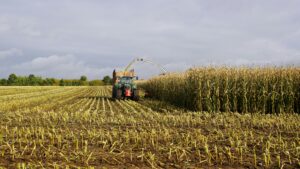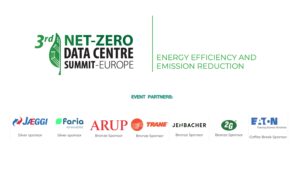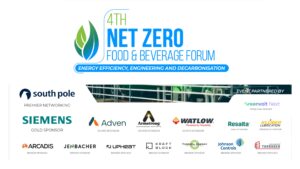Industrial thermal processes have developed enormously in recent decades, with mechanical vapor recompression (MVR) being a disruptive technology in thermal energy management. In contrast to traditional heating techniques, which process heat directly from fresh steam generation, MVR systems fundamentally redefine how heat is processed by recycling vapor wasted through recompression. This closed-loop system is a paradigm change in industrial energy use and it can provide the potential energy saving up to 85% from conventional approaches.
One of the most fascinating aspects of mechanical vapor recompression is its potential to preserve product integrity while dramatically lowering operational costs as well as the environmental impact. In this article, the technical aspects of the MVR system, methods of implementation, and prospective applications are discussed to supply the food processing industries with evidence of this exciting technology.
Mechanical Vapor Recompression: System Architecture and Operational Dynamics
The success of MVR is built on the advanced engineering approach to energy recovery. The subsequent section discusses the fundamental technical features of this technology which make it very efficient for food processing purposes.
Compression Technology and Heat Transfer
Vapor compression in MVR systems operates through specialized centrifugal or positive displacement compressors. It is designed specifically for saturated vapor handling. Furthermore, these systems normally have compression ratios in the range of 1.3 to 1.8. It balances the energy usage and the required temperature increase. Moreover, the compression process increases vapor pressure and temperature simultaneously, following adiabatic compression principles. Modern compressors also use titanium or stainless steel parts for the corrosive vapors and have sophisticated sealing mechanisms for the avoidance of contamination. Variable frequency drives allow accurate regulation of compression rates. Thus, it enables systems to be responsive to changing process requirements and to operate at minimal energy consumption. This makes it one of the top benefits of mechanical vapor recompression in food processing.
Process Integration Components
All the multifunctional specific components are used by the mechanical vapor recompression system at the same time for efficient heat recovery. Furthermore, the main elements are shell-and-tube heat exchangers, cyclonic vapor separators, and condensate recovery systems. Vapor separators use centrifugal force to wash out liquid droplets, and so only clean vapor is fed into the compressor. To get the best possible heat transfer coefficients and to avoid fouling, the heat exchangers have optimized surface configurations. In addition, Condensate water recovery systems recover and recycle quality water to reduce overall water consumption. Also, these components are produced with corrosion-resistant materials for food contact.
Control Systems Architecture
The control architecture of MVR systems includes multi-level monitoring and automation modules. Furthermore, pressure transmitters, temperature sensors, and flow meters continuously feed information to a programmable logic controller (PLC). Under this type of controller, complex algorithms are running that ensure the best vapor quality and compression ratios. Moreover, the system tracks some key values. These are suction pressure, expulsion temperature, motor current, and bearing temperature. Sophisticated control systems also include algorithms of surge protection that help to avoid compressor instabilities and simultaneously ensure efficiency. The integration of plant-level control systems also enables cross-communication with the operation of other process equipment.
Performance Optimization Protocols
Mechanical vapor recompression optimization requires a dynamic measurement and control of key operational parameters to achieve optimal performance. These protocols utilize real-time measurement of the selective energy use, heat transfer coefficient, and compression efficiency. In addition, sophisticated systems employ thermodynamic models to estimate ideal operating points given process parameters. Moreover, performance monitoring involves the measurement of key performance indicators. It includes energy per unit of vapor compressed, system availability, and maintenance time. Routine performance evaluations also provide the means to look for efficiency gains by amending operating parameters or equipment design.
MVR in Food Processing: Economic Analysis and Implementation
The financial aspects and implementation constraints of MVR systems must be understood in order for these systems to be adopted successfully. So, the following sections examine key economic and practical considerations.
Investment Structure Analysis
Cost aspects of mechanical vapor recompression systems beyond the acquisition of initial equipment are considered in their financial appraisal. Capital costs include primary equipment, auxiliary systems, labor costs for installation, and commissioning costs. Furthermore, infrastructure changes require investments in electrical systems, foundations, and piping networks. So, the analysis should take into account the energy costs of the area, incentives at hand, and carbon credits. Moreover, recent financial instruments such as equipment leasing, performance contracts, and green financing programs can positively impact the initial capital requirements to a large extent and at the same time allow the achievement of long-term economic gains.
Operating Economics
The operating cost structure of MVR systems is substantially different from steam systems. Major operating expenses consist of electricity use for compression, maintenance materials, and labor used for system monitoring. Furthermore, energy costs generally account for 70-80% of operating costs, and thus efficiency is critical for economic sustainability. Moreover, maintenance cost consists of scheduled component replacement, condition monitoring, and regular system optimization. Sophisticated monitoring systems can take the form of tools capable of easing unplanned downtime and improving the robustness of maintenance schedule systems, thus contributing to better economic performance.
Implementation Strategy
Effective mechanical vapor recompression implementation entails full planning and multidisciplinary coordination. Furthermore, implementation procedures start with thorough site surveys and process integration analyses. Engineering factors include space limitation, availability of utility, and compatibility with existing control systems. Moreover, installation planning should consider equipment sequence delivery, tie-in requirements, and commissioning sequence. The strategy consists of the elaboration of operating procedures, safety rules, and training courses. This is to enable a correct system to function after installation.
Performance Validation Methods
Performance validation represents a set of organized test and verification steps to validate system functions. The validation procedure involves physical testing, control system validation, and performance testing in different operational conditions. Furthermore, the major performance metrics are the energy efficiency ratio, product quality parameters, and system reliability indicators. Moreover, requirements for documentation include test procedures, performance reports, and compliance document verification. Additionally, recent validation techniques are based on digital instrumentation for data acquisition and processing that allow complete performance validation.
MVR In Food Processing: Future Directions and Advancements
The evolution of MVR technology keeps expanding system capabilities and performance in food processing. There is a need to understand these developments to plan for the future and make investment decisions. So, let’s take a look ahead:
Next-Generation Technologies
The emerging energy-efficient technologies for food processing industries in MVR systems enhance the capability of operation and performance. Among the recent advances is the development of highly specific impeller designs that enhance compression efficiency and improve operating ranges. Furthermore, advances in material science are providing us with a new generation of alloys and coatings that improve the wear resistance of components and their performances. Moreover, research on magnetic bearings and cutting-edge sealing technologies is likely to lead to increased minimal maintenance and enhanced reliability. This technological growth also leads mechanical vapor recompression systems to be more powerful in processing diverse needs.
Digital Integration Methods
Digital change in MVR systems is based on the use of powerful sensing and control technologies to improve performance. Furthermore, AI algorithms adapt the operating of a system according to historical and real-time analysis of data. Remote system management and predictive maintenance are also possible through cloud-based monitoring platforms. In addition, digital twins offer virtual system models for training operators and optimizing systems. So, plant-wide digital integration allows for full energy management and process optimization.
Environmental Impact Reduction
Advanced MVR systems incorporate features specifically designed to minimize environmental impact. The new designs minimize refrigerant usage and remove the need for any chemical treatment. Furthermore, enhanced heat recovery systems achieve the highest energy efficiency with fewer waste streams. High-performance materials and manufacturing processes also minimize the environmental footprints of system elements. So, these advances are consistent with the increasingly restrictive environmental regulation all along, achieving the system’s performance and reliability.
Hybrid System Innovations
Recent breakthroughs meld mechanical vapor recompression technology with supporting technology to produce the best performance in different conditions. Integration with heat pump systems enables broader temperature ranges and improved efficiency. Renewable energy integration provides opportunities for reduced carbon emissions. Sophisticated control systems maximize the performance of hybrid configurations according to the process requirements as well as the energy availability. So, these advances extend the uses of MVR technology and enhance the efficacy of the overall MVR system.
To Sum Up
The development of mechanical vapor recompression technology is an important chance for food processing plants to make significant energy savings whilst working towards sustainability targets. Since the industry is continuously challenged to decrease energy consumption and its environmental footprint, MVR systems provide a reliable technology that provides economic and ecological advantages. The ongoing evolution of this technology, especially in digitalization and hybrid systems, points towards even higher future possibilities.
For professionals who are keen to learn more about such energy-efficient solutions, the upcoming 3rd Net Zero Food & Beverage Forum in Berlin, Germany on January 15-16, 2025 will provide the right opportunities and networking possibilities. The conference will contain sessions, panel discussions, etc. for the latest strategies applied to food processing and to keep the participants a step ahead of the competition. Register now!




